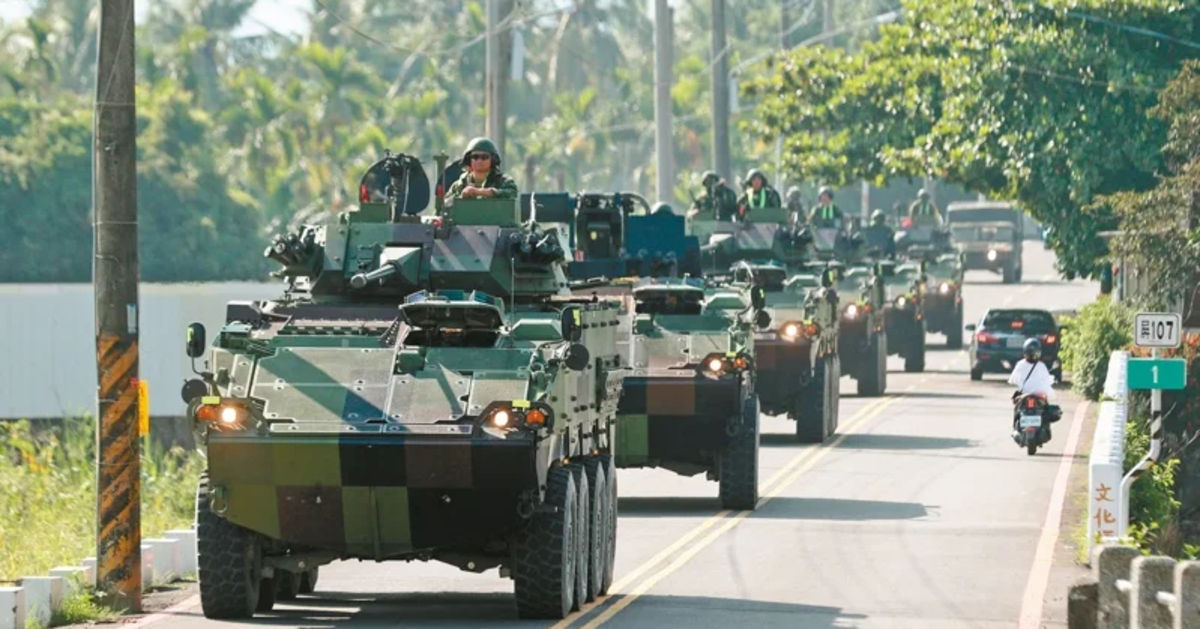Han Kuang 41st Military Exercise Underway: Taiwan Launches 10-Day Defense Drill Simulating Gray Zone to Full-Scale Combat
TAIWAN, July 9 — Taiwan’s National Army officially commenced the live-fire portion of its annual “Han Kuang 41st Exercise” today, initiating a ten-day, nine-night intensive training operation designed to simulate a gradual escalation from gray zone harassment to full-scale warfare. The military drill, which runs through July 18, aims to enhance the armed forces’ overall combat readiness and their ability to transition from peacetime operations to wartime posture.
This year’s exercise includes the deployment of newly introduced military hardware, including the HIMARS multiple rocket launcher system, upgraded TOW anti-tank missiles, and shoulder-launched Stinger missiles. While live-fire drills will be limited to outer island defense zones, the main island will not see any full-scale live-fire operations. The newly acquired M1A2T battle tank, still undergoing acceptance testing, will not participate in the broader exercise but is scheduled for a public live-fire demonstration on July 10.
Military officials emphasized that the 2025 edition of Han Kuang places a stronger focus on confronting gray zone threats—a type of warfare involving non-traditional, often ambiguous tactics such as cyberattacks and economic pressure—alongside traditional defense operations. Urban air defense resilience and sustained combat capabilities are also key priorities in this year’s scenario planning.
The exercise is structured into multiple phases:
-
July 9–11 marks the “routine crisis management stage” where enhanced alerts and response measures to gray zone incursions will be activated.
-
July 12 will serve as a deployment preparation phase focusing on combat power preservation.
-
July 13–18 shifts into full-scale combat operations, testing inter-service coordination and long-term defense sustainability.
As in previous years, the drills will follow a “no spoiler” approach, meaning that individual actions and decisions are made in real time without pre-set conclusions. This method is intended to increase realism and expose personnel to unpredictable combat scenarios.
A new highlight of the 2025 Han Kuang Exercise is the planned full closure of the Wanban Bridge, which will be sealed off entirely during a specific segment of the operation—marking the first time such a maneuver is implemented. Civilian buses will not be utilized as roadblocks, a break from tradition. Instead, the military will introduce “Esco Fortifications,” a new type of mobile barricade, during urban combat simulations. Troops will also make use of the Taipei MRT system to rapidly transport weapons and supplies, simulating emergency resupply under combat conditions.
The Ministry of National Defense underscored the importance of treating any unexpected occurrences during the exercise—such as vehicle malfunctions or miscommunications—not as failures, but as valuable training opportunities that help troops build real-world experience and improve operational capability.
With the expanded scope and longer duration of this year’s exercise, military personnel are expected to be visibly active throughout cities and towns, potentially disrupting normal life and traffic patterns. The Ministry has called on the public for patience, understanding, and continued support for Taiwan’s service members.
The Civil Aviation Administration has also issued a warning that flight operations at certain airports may experience delays or schedule changes. Passengers are advised to stay updated on travel advisories throughout the duration of the drills.
As Taiwan strengthens its military preparedness amid growing regional tensions, the Han Kuang Exercise remains a vital part of ensuring the island’s defense readiness and strategic resilience.



